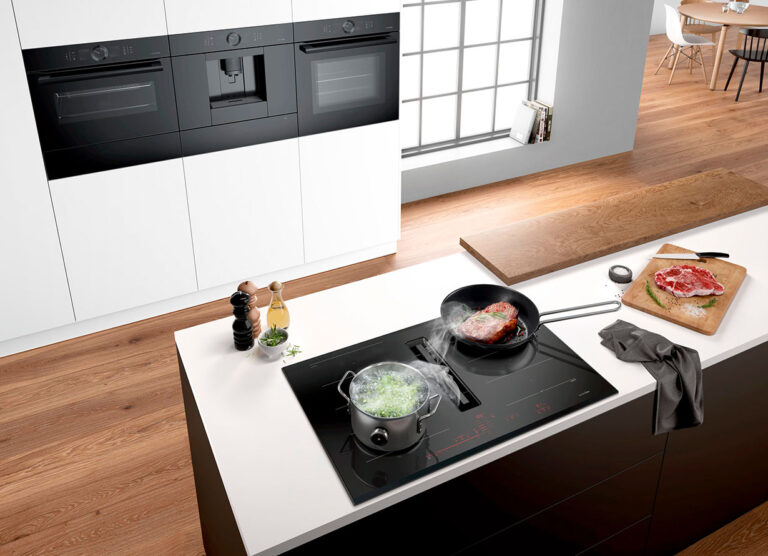Baking is a science that requires precision and accuracy, and smart scales are a game-changer in achieving perfect results. Unlike traditional scales, smart scales offer advanced features such as connectivity with mobile apps, automatic ingredient recognition, and precise measurements. This guide will explore how to effectively use smart scales for baking, including selecting the right scale, setting it up, and leveraging its features to enhance your baking experience.
- The Importance of Precision in Baking: Discuss how accurate measurements can affect the outcome of baked goods, ensuring consistency and quality.
- Advantages of Smart Scales: Highlight the benefits of using smart scales, such as improved accuracy, ease of use, and the ability to connect with apps for recipes and nutritional information.
Selecting the Right Smart Scale

- Key Features to Consider:
- Measurement Accuracy and Precision: Importance of choosing a scale with high precision (e.g., 0.1g or 0.01oz increments).
- Maximum Weight Capacity: Choosing a scale that can handle both small and large quantities.
- Connectivity Options: Availability of Bluetooth or Wi-Fi connectivity for syncing with apps.
- App Integration and Compatibility: Compatibility with baking apps and platforms, availability of recipe databases, and nutritional tracking.
- Design and Durability: Importance of a sturdy, easy-to-clean surface and a user-friendly design.
Setting Up Your Smart Scale
- Unboxing and Initial Setup:
- Unpack the scale and insert batteries or charge if necessary.
- Power on the device and download the corresponding app on your smartphone or tablet.
- Connecting the Scale to the App:
- Guide to pairing the scale with the app via Bluetooth or Wi-Fi.
- Setting up user profiles, if applicable, for personalized tracking and preferences.
- Calibrating the Scale:
- Importance of calibration for accurate measurements.
- Step-by-step instructions for calibrating the scale, including using calibration weights if necessary.
Using Smart Scales for Accurate Measurements
- Measuring Ingredients:
- Taring the Scale: How to zero the scale before adding ingredients to a container.
- Measuring by Weight vs. Volume: Advantages of measuring ingredients by weight rather than volume for accuracy.
- Adding Multiple Ingredients: Using the tare function to measure multiple ingredients in one bowl without transferring.
- Special Considerations for Baking:
- Measuring Small Quantities: Tips for accurately measuring small amounts of ingredients like salt or baking powder.
- Measuring Liquid Ingredients: Using the scale for both dry and liquid ingredients, understanding density differences.
- Handling Sticky or Tricky Ingredients: Techniques for measuring sticky ingredients like honey or syrup, such as using non-stick sprays or wetting the container.
Exploring Smart Scale Features
- App Integration for Recipes and Guidance:
- Accessing Recipe Databases: Using the app to find and follow recipes with precise measurements.
- Step-by-Step Baking Guidance: Following guided recipes that adjust ingredient quantities based on servings or dietary preferences.
- Scaling Recipes: Easily scaling recipes up or down by adjusting the ingredient quantities in the app.
- Nutritional Tracking and Analysis:
- Tracking Ingredients’ Nutritional Information: How the scale and app can provide nutritional data for ingredients.
- Creating Custom Recipes: Entering your own recipes into the app for nutritional analysis and future use.
- Timers and Alerts:
- Using built-in timers in the app for precise baking times.
- Setting alerts for specific baking steps, such as mixing, resting, or baking times.
Advanced Tips for Using Smart Scales in Baking
- Batch Baking and Prepping:
- Using the scale to measure large batches of ingredients for multiple recipes.
- Pre-measuring and storing ingredients for future baking sessions.
- Precision for Specialty Baking:
- Importance of precision in specialty baking, such as gluten-free or low-carb baking.
- Using the scale to measure alternative ingredients like almond flour, coconut flour, or sweeteners.
- Maintaining Consistency in Baking:
- Recreating favorite recipes with consistent results by precisely measuring ingredients each time.
- Documenting and saving custom ingredient adjustments in the app for future reference.
Maintaining and Caring for Your Smart Scale
- Cleaning and Maintenance:
- Proper cleaning methods for keeping the scale surface clean and free from residue.
- Avoiding submerging the scale in water or exposing it to extreme temperatures.
- Battery Management:
- Tips for extending battery life, such as turning off the scale when not in use.
- Checking and replacing batteries regularly or recharging as needed.
Troubleshooting Common Issues
- Connection Issues:
- Solutions for resolving Bluetooth or Wi-Fi connectivity problems.
- Ensuring the app and scale firmware are up-to-date.
- Inaccurate Measurements:
- Addressing issues with calibration, surface level, and environmental factors.
- Contacting customer support for persistent issues.
Conclusion
- Recap of Benefits: Summarize the advantages of using smart scales for baking, including precision, ease of use, and enhanced baking experience.
- Encouragement to Experiment: Encourage readers to experiment with new recipes and techniques using their smart scale.
- Final Tips for Success: Remind users to regularly use and explore the features of their smart scale for the best baking results.
By incorporating smart scales into your baking routine, you can achieve greater accuracy, explore new recipes, and enjoy a more streamlined and efficient baking process. Whether you’re a novice baker or a seasoned pro, a smart scale can elevate your baking game and help you create delicious, consistent results every time.




